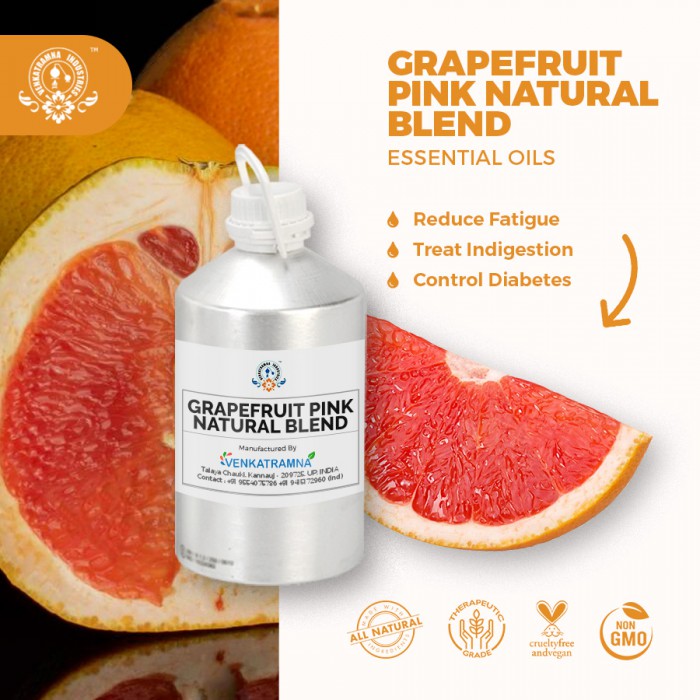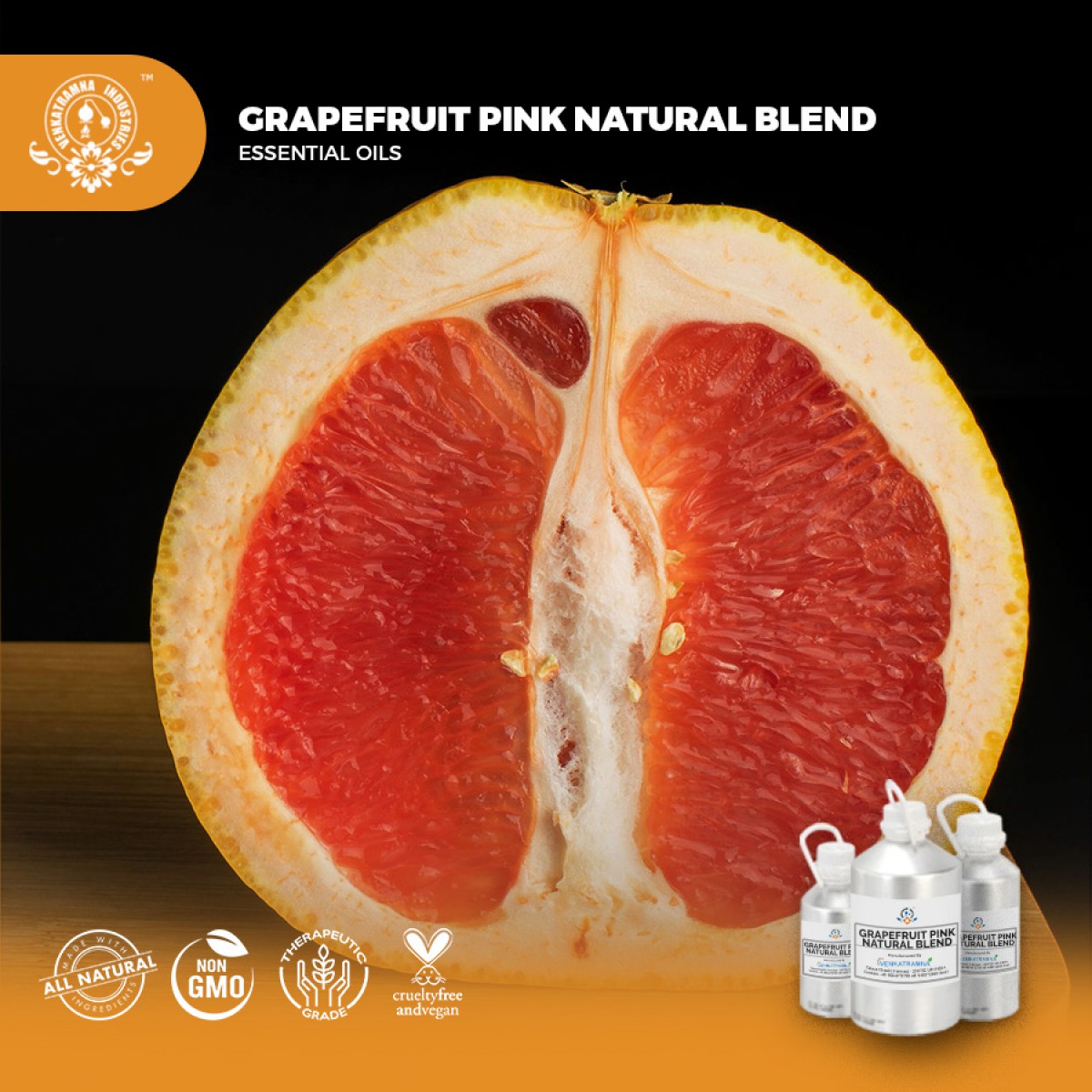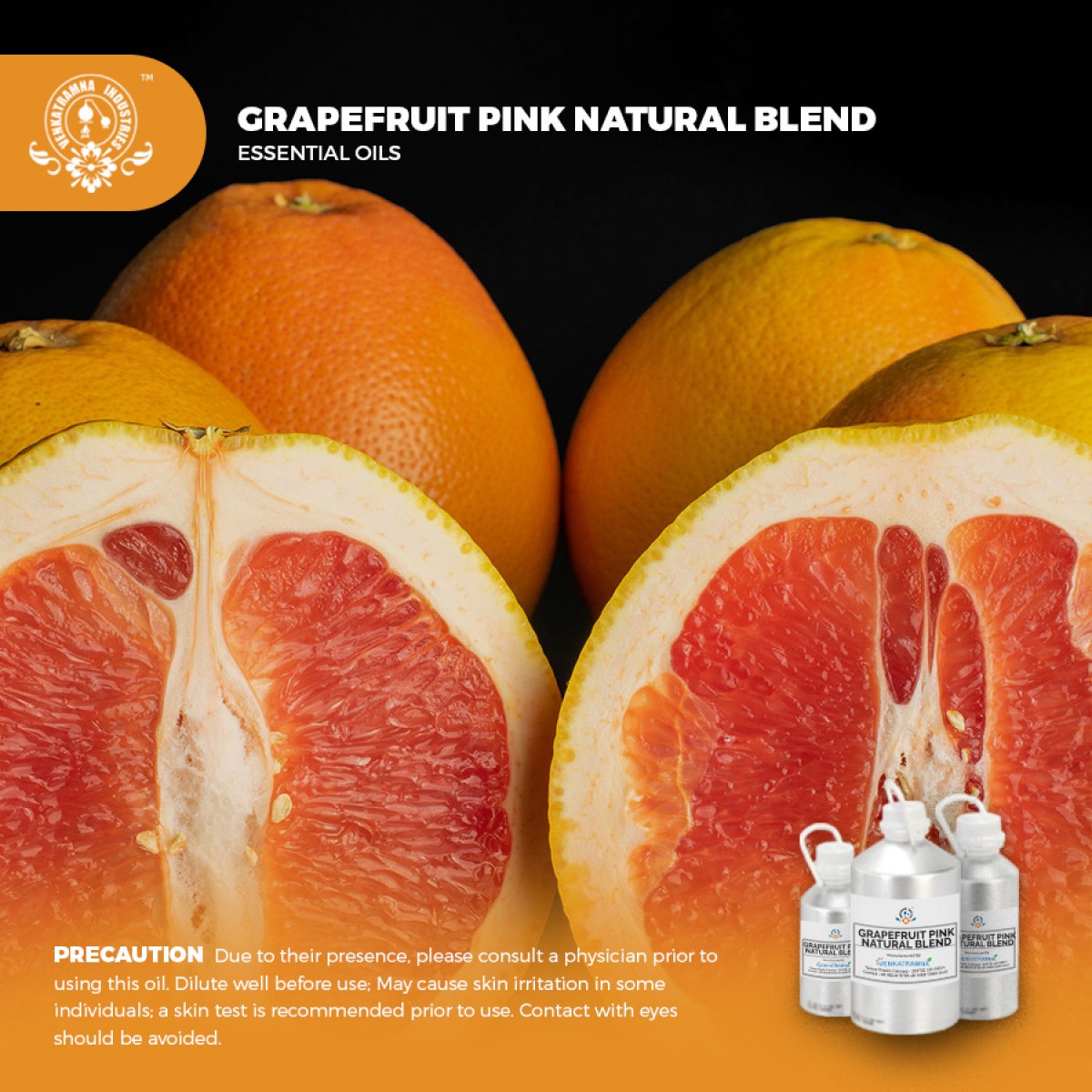Botanical Name: Citrus paradisi Common name: Grape fruit Plant Read More
|
Botanical Name: |
Citrus
paradisi |
|
Common name: |
Grape
fruit |
|
Plant
family: |
Rutaceae |
|
Genus: |
Citrus |
|
Appearance/Color: |
Liquid is Pale yellow to Reddish orange having thin consistency |
|
Odor: |
Grape
fruit pink essential oil has a fresh, medium strength sweet aroma marking
fruits character. |
|
Blends With: |
Other members of Citrus family like Rosemary, Cypress, Lavender,
Cardamom, peppermint, Black pepper and Geranium are perfect blending
combinations. In general, Grape fruit essential oil pink goes well with most
of the spice oils. |
|
Origin: |
Italy |
|
Source: |
Peel |
|
Method
of Extraction: |
Steam
Distillation |
Grape
fruit essential oil is one among many popular oils of Citrus family having big
demand in aromatherapy.
The
sweet citrus smelling Grape fruit pink essential oil is a mood booster and has
a wide arena of applications in cosmetics, culinary and health supplements.
Grape fruit pink essential oil is extracted by process of cold pressing. Oil glands are not in fruit but are located deep within the peel making the extraction process little difficult. However, our approach of cold pressing ensures to retain the quality than other methods relying on heat-based extraction.
DISCLAIMER
The complete range of conditions
or methods of use are beyond our control therefore we do not assume any
responsibility and expressly disclaim any liability for any use of this
product. Information contained herein is believed to be true and accurate however,
all statements or suggestions are made without warranty, expressed or implied,
regarding accuracy of the information, the hazards connected with the use of
the material or the results to be obtained from the use thereof. Compliance
with all applicable federal, state, and local laws and local regulations
remains the responsibility of the user.
The FDA has not evaluated the
statements on this website. No claims are made by Venkatramna Industries as to
the medicinal value of any products from vriaroma.com or by us. The information
presented here is for educating our customers about the traditional uses of
essential oils and is not intended to diagnose, treat, cure, or prevent any
disease. You are responsible for understanding the safe application of these products.
If you have any questions, please call or email us for further information.
As per NAHA guidelines, New Directions Aromatics
(NDA) does not recommend the ingestion of essential oils. It is imperative to
consult a medical practitioner before using Essential Oils for therapeutic
purposes. Pregnant and nursing women and those taking prescription drugs are
especially advised not to use this product without the medical advice of a
physician. The oil should always be stored in an area that is inaccessible to
children, especially those under the age of 7.
Grape
fruit pink essential oil has good absorption ability through the skin in aromatherapies. It is
thought to transmit messages to a brain center that controls emotions. So, it’s
known to relax and calm the nervous system creating mental rejuvenation since
good olden times.
Pink Grapefruit
essential oil also balances skin tone and improves complexion by promoting cell
rejuvenation and turnover. It helps clearing skin blemishes, dark spots and
acne.
Grape
fruit pink essential oil in Pharma
Grape
fruit pink essential oil has its effect on body’s lymphatic system. This
ability of Grape fruit pink essential oil helps to strengthen body’s ability to
fight infections. It flushes out toxins from body and has weight loss effects.
Its ability of fighting sweet tooth can help prevent diabetes. Unlike other
natural essential oils, Grape fruit pink essential oil has both moods relaxing
as well as health benefits.
Essence
of Grape fruit pink essential oil
Grape
fruit pink essential oil has high levels of antioxidant vitamin C. Lemony
monoterpene called Limonene is rich in citrus peels. Limonene has a refreshing
ability and enhances the room environment.
COMMON
USAGE
·
Suppress
Appetite
·
Treat
Influenza
·
Treat
Malaria
·
Cure
Fever
·
Reduce
Fatigue
·
Treat
Indigestion
·
Control
Diabetes
·
Reduce
Acidity
·
Eliminate
Constipation
·
Remove
Flatulence
Ingredients:
|
S.No |
Key Constituents |
Strength (%) |
|
1 |
(p)-Limonene |
84.8-95.4 |
|
2 |
b-Myrcene |
1.4-3.6 |
|
3 |
a-Pinene |
0.2-1.6 |
|
4 |
Sabinene |
0.4-1.0 |
|
5 |
Nootkatone |
0.1-0.8 |
|
Non-Volatile
Compounds |
||
|
6 |
Bergapten |
0.012-0.19 |
|
7 |
Epoxy-bergamottin |
0.1126 |
|
8 |
Bergamottin |
<0.11 |
TOXICOLOGICAL INFORMATION
Safety
Summary
·
Hazardous: Phototoxic (low risk); skin
sensitization if oxidized.
·
Listed
as non-toxic, non-sedative and non-irritant
·
Contraindications (dermal): If applied to
the skin at over maximum use level skin must not be exposed to sunlight or
sunbed rays for 12 hours.
·
Cautions: Old or oxidized oils
should be avoided.
·
Maximum dermal use level: 4%
Safety advice
Because of its (þ)-limonene
content it is recommended that oxidation of grapefruit oil is avoided by
storage in a dark, airtight container in a refrigerator. The addition of an
antioxidant to preparations containing it is recommended.
Regulatory guidelines
Has GRAS status. In Europe,
essential oils containing furanocoumarins must be used so that the total level
of bergapten will not exceed: (a) 15 ppm in nished cosmetic products intended
for application to skin areas likely to be exposed to sunshine, excluding
rinse-off products; or (b) 1 ppm in sun protection and in bronzing products. In
the presence of other phototoxic ingredients, the sum of their concentrations
(expressed as % of the respective maximum levels) shall not exceed 100%.
Organ
Specific Effects
Pink Grapefruit
essential oil has high levels of vitamin C. Because of which using undiluted
grapefruit oil directly on skin may cause sensitivity to sun.
To avoid skin
irritation, grape fruit pink essential oil is recommended to be used as blend
with sweet almond oil or jojoba oil.
·
Adverse skin reactions: Undiluted
grapefruit oil was slightly irritating to rabbits, but was not irritating to
mice or pigs. Tested at 10% or 100% on two panels of 25 volunteers it was not
irritating. Tested at 10% on 25 volunteers it was not sensitizing. It is
non-phototoxic. Autoxidation products of (þ)-limonene can cause skin
sensitization.
·
Reproductive toxicity: The low developmental
toxicity of (þ)-limonene in rabbits and mice suggests grapefruit oil is not
hazardous in pregnancy.
Systemic
Effects
·
Acute
Toxicity: Non-Toxic
·
Skin
irritation: May cause
slight irritation on skin if used under sun. consumers are recommended to use a
blend of it and also perform a skin patch test.
·
Eye
irritation: May cause
irritation in eyes. So direct application in eyes need to be avoided.
·
Internal use: Grapefruit pink essential oil can be taken
internally only under health professional advice. Internal use may cause toxic
effects in some diseased individuals.
·
Chronic
effects in human: No
information.
·
Carcinogenic
effect: No
·
Presence
of allergen: Limonene is a
listed allergen. So Grape fruit pink
essential oil can be slightly allergic in some subjects.
·
Reproductive
toxicity: No data
available.
·
Germ
cell mutagenicity: No data
available.
·
Drug
interactions: No data
available.
ECOLOGICAL INFORMATION
·
Flammable
liquid and vapors. Staying cautious and keeping away from open fire and hot
surfaces is recommended.
·
Toxic
to aquatic life.
·
Recommended
not to directly discharge into water ways





 MSDS-Grapefruit2.pdf
MSDS-Grapefruit2.pdf




